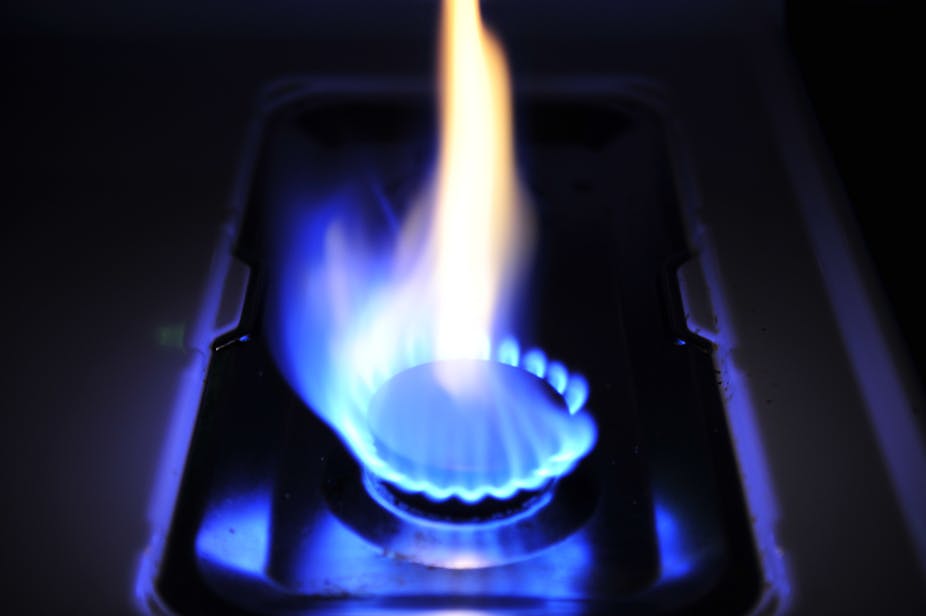You may have seen conflicting reports lately about Australia’s gas supply. On one hand, the recently released Energy White Paper assumes the gas market is facing a looming shortage.
On the other hand, an Australian Energy Market Operator report released this week forecasts there will be no significant shortage in the short term.
The white paper uses its assumption to argue for developing other gas sources, particularly unconventional ones such as coal seam gas. And the Domestic Gas Strategy, also released this week, makes clear it’s full steam ahead on coal seam gas.
But if there’s no shortage, will we still need coal seam gas?
Is there a gas crisis?
One of the underlying assumptions of the white paper is that unconventional gas projects such as coal seam gas are necessary because conventional gas reserves have been depleted. The reasons for this supposedly looming shortage are regulatory barriers and moratoriums.
The paper notes that gas shortages, “whether real or perceived”, have the potential to destabilise local gas markets.
There is, however, a strong suggestion that concerns about gas shortages are misplaced. The AEMO report forecasts no shortage in supply gas for any of Australia’s eastern and southeastern gas markets over the short term to 2019.
There are several different reasons for this.
First, lower consumption in Queensland and New South Wales combined with improvements in infrastructure have lowered supply concerns.
The expanded capacity of the Victoria-NSW connection and upgrades to pipelines between South Australia and the eastern states have reduced the prospect of a shortage over the next few years.
Australia enters the international market
Matt Zema, managing director and chief executive of AEMO, noted that this shift in forecast is the product of a dynamic gas landscape and stems from the fact that the eastern and south eastern markets are experiencing rapid change.
This change corresponds with the start of LNG exports. Major LNG production is occurring both in Australia and internationally.
The Gorgon LNG plant from Chevron is predicted to produce 15.6 million tonnes of LNG each year. The Gladstone facility in which Santos is involved is predicted to product 7.8 million tonnes each year.
Australia Pacific LNG along with Origin Energy and Conoco Phillips (United States) and Sinopec (China) are also predicted to produce 7-10 cargoes by the end of 2015, prior to their longer term contractual commitments taking effect in 2016.
Further, whilst the Darwin Bayu-Undon plant is contracted for supply until 2023, the prospect of any expansion of LNG production in Darwin as an alternative to developing floating LNG facilities, will also contribute to supply.
These forecasts indicate that the future production of LNG is likely to outnumber demand and that any shortage in the supply of gas will be temporary. The overall prediction is that if 50% of all non-approved LNG capacity goes ahead, there will be excess production by 2020.
Did the white paper get it right?
So, while it seems less likely there will be shortages in gas supply, it remains likely that gas prices will continue to increase towards the international price.
In this changing context, the white paper argues that the best response is to actively increase competition, particularly to ensure additional supply, which could include unconventional sources such as coal seam gas.
This is consistent with the recent decision by the Australian Competition and Consumer Commission to hold a 12 month public inquiry into whether wholesale gas prices on the east coast and South Australia are being driven up by insufficient competition.
In 2013 the Eastern Australian Domestic Market Gas Study by the Department of Industry and Bureau of Resources and Energy Economics noted that LNG production is likely to subject the east coast gas market to forces that are in part determined on a global stage.
In an opaque, long-term contract-based market environment, where it’s difficult to make forecasts, managing risk can be hard. This makes it difficult to accurately predict the ability of the market to respond to new and large factors in the supply and demand balance such as the impact that the export market will have upon gas pricing.
In light of this, there continues to be a high risk that domestic gas prices will exceed export prices. In the absence of a domestic reservation policy, the Energy White Paper seeks to manage this risk by ensuring enough gas supply.
But as the white paper concedes, an increase in gas supply must be balanced by a rigorous risk-management framework. Environment, human health and worker safety must be carefully protected. The federal government has endorsed two frameworks to address issues around coal seam gas and land conflict.
In summary, the white paper and its strong focus on developing further gas supplies provides a robust policy response in a time of market change and uncertainty thanks to the export. It seeks to encourage competition within the upstream domestic gas sector and improve the diversity of supply.
After many years of steady market conditions, gas consumers are going to have to adjust to higher prices. One of the most effective economic responses to this is to implement a policy framework that promotes more supply, including unconventional sources such as coal seam gas. Whether the risk of shortages is real or perceived, the white paper promotes certainty in a highly volatile environment.

